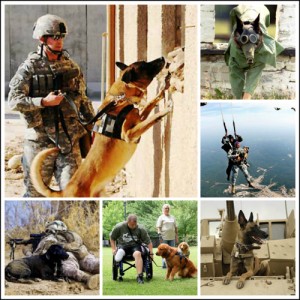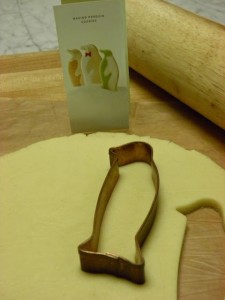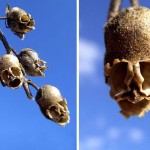Fun Stuff
Category
You say that's a flower?
As I sit down to write this blog, there are 23 days, 8 hours and 9 minutes until Spring 2015. With the record-setting snowfall in the Northeast and bone-numbing cold across the country, I think it’s safe to say we’re all ready for springtime and a cheerful burst of color.
If you haven’t noticed, there are some flowers that look like, well, other things. Take a look at these buds and tell me what you see. I’ll post the answers as a comment under this blog post on my Facebook page.
1. Dracula Simia
2. Orchis Italica
3. Psychotria Elata
4. Impatiens Bequaertii
5. Impatiens Psittacina
6. Antirrhinum
7. Peristeria Elata
By the way, you can keep track of the countdown to spring by visiting this website: http://days.to/spring/2015
Thank you for your service, Woof!
 Dogs have been used in war from since the start of civilization. The Greeks and Romans used dogs as sentries or patrols, although they were also taken into battle. It was during the Seminole Wars that dogs were first officially used in the U.S. military. Since then, dogs have served as messengers, guard dogs and propaganda mascots. They have also been used in experimental medical treatments, detection and tracking, scouts, law enforcement, search and rescue, drug and explosives detection, therapy dogs and for intimidation purposes.
Dogs have been used in war from since the start of civilization. The Greeks and Romans used dogs as sentries or patrols, although they were also taken into battle. It was during the Seminole Wars that dogs were first officially used in the U.S. military. Since then, dogs have served as messengers, guard dogs and propaganda mascots. They have also been used in experimental medical treatments, detection and tracking, scouts, law enforcement, search and rescue, drug and explosives detection, therapy dogs and for intimidation purposes.
The bond between handlers and their combat canines is extraordinary, and holds special significance. Because many handlers and canines rotate through platoons or join units that have been together for months, even years, they are often outsiders. The strength of this partnership makes it easier to endure the feeling of being an outsider.
For injured and wounded veterans, dog therapy has proven exceptionally effective in aiding in recovery from PTSD. They also serve as companion animals and service dogs.
Dogs are known for their loyalty, affection and faithfulness. These characteristics are what make military dogs four-legged heroes.
New Year's Traditions
 It’s amazing that despite how traditions evolve over the centuries, the core of these customs remains the same. As we mark the close of 2014 and prepare to launch 2015, here is a look at historic and contemporary traditions.
It’s amazing that despite how traditions evolve over the centuries, the core of these customs remains the same. As we mark the close of 2014 and prepare to launch 2015, here is a look at historic and contemporary traditions.
Out with the old, in with the new.
Some Regency England citizens prepared for the New Year by scrubbing the house from top to bottom. Anything perishable such as rags or ashes, were removed so nothing carried over from one year to the next, according to author Maria Grace.
Today, many people apply a little elbow grease before the clock strikes twelve on December 31st in order to create a “fresh start.” They may dispose of alcohol, unhealthy food or other items related to “bad habits” they hope to abandon in the new year. Other housecleaning practices may include returning borrowed items, paying off debts and mending quarrels. The symbolism of such “clean slate” behavior can be traced back to many early civilizations.
Creating your own luck
Rather than depend on the whims of fate, Regency citizens attempted to influence the events and fortune awaiting them in the new year. Farmers were known to hang specially baked pancakes from cows’ horns and burn hawthorn bushes in the fields for a prosperous year. Cows’ udders were washed with water to insure productivity.
The contemporary custom of sharing a kiss on midnight with the one you love is practiced so the romance flourishes in the upcoming year.
What traditions are customary for your celebration of the New Year?
The Nutcracker Tradition
One of my longstanding Christmas traditions is appearing in the Pacific Northwest Ballet’s Nutcracker performance in the role of “Grandmother.” This year’s participation is especially poignant because it is the last year that the Maurice Sendak / Kent Stowell production will be presented. I’ve been a part of this holiday tradition for more than 20 years and have many special memories of the cast and audience.
This unique interpretation of Nutcracker debuted on December 13, 1983, and soon became a classic Seattle tradition. The vibrant stage sets, designed by Sendak, also required the engineering brilliance of Boeing. The Christmas tree, which doubles in size during a dream sequence, was re-designed by a Boeing jet interior designer so that it no longer required nine stage hands and operated more smoothly. (You can see this tree in the photo collage below.)[…]Continue Reading
My favorite Christmas cookie recipe
I have to admit, I’m not one of those talented women who can whip up a gorgeous collection of holiday treats. I don’t putter for hours on end in the kitchen and my meal-planning skills lean toward quick and simple.
But baking cookies at Christmas is such a time-honored tradition that even I had to find something that would allow me to find joy in the kitchen this time of year. My solution is Martha Stewart’s sugar cookie recipe. My favorite cookie cutter shape is the penguin, but you can adapt this recipe for any cut-outs.
If you are in search of your own family traditional cookie recipe, I hope you’ll give this  one a try. I’ve spent many happy hours with family and friends preparing these wonderful treats!
one a try. I’ve spent many happy hours with family and friends preparing these wonderful treats!
Ingredients
• 4 cups sifted all-purpose flour, plus more for surface and more if needed
• 1 teaspoon baking powder
• 1/2 teaspoon salt
• 8 ounces (2 sticks) unsalted butter, softened
• 2 cups sugar
• 2 large eggs
• 2 teaspoons pure vanilla extract
• Royal Icing
Directions
1. Sift flour, baking powder, and salt into a bowl. In a separate bowl, beat butter and sugar with a mixer on medium speed until pale and fluffy, about 3 minutes. Beat in eggs and vanilla. Reduce speed to low. Gradually mix in flour mixture. Turn out dough, and divide in half. Flatten each half into a disk, and wrap in plastic. Refrigerate until firm, at least 1 hour or overnight.
2. Preheat oven to 325 degrees, with racks in upper and lower thirds of oven. Let one disk of dough stand at room temperature just until soft enough to roll, about 10 minutes. Roll out dough on a lightly floured work surface to just under 1/4-inch thick, adding more flour as needed to keep dough from sticking. Chill in refrigerator until firm, about 30 minutes. Cut out cookies using desired cutters or templates. Transfer to parchment-lined baking sheets as you work. Roll out scraps, and repeat once. Repeat with remaining disk of dough. Chill cookies in freezer until very firm, about 15 minutes.
3. Bake cookies, switching positions of sheets and rotating halfway through, until edges turn golden, 15 to 18 minutes. Let cool on sheets on wire racks. Decorate with Royal Icing.
Cookies can be stored at room temperature for up to 1 week.
What is your family’s favorite Christmas cookie recipe?


















